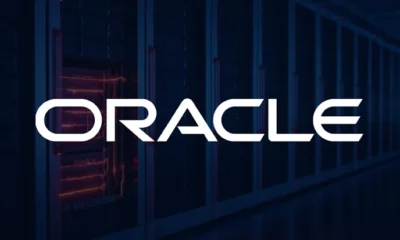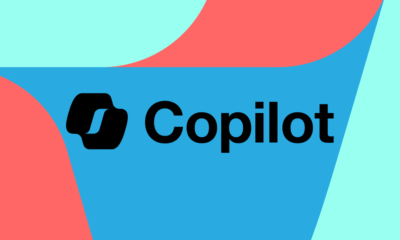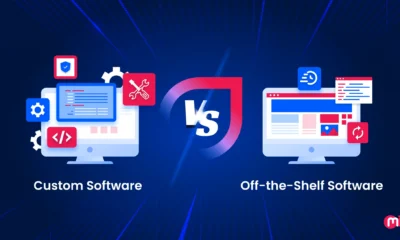Startups
Navigating the Acquihire Startup Wars: Understanding the Driving Forces

Acquihires have become the defining deal shape of 2025. Startups are buying startups for the people, not the products, often via “hire-and-license” arrangements that move fast, dodge red tape, and scoop up elite AI talent.
In this article, I unpack why acquihires are surging, how founders are deliberately positioning teams as irresistible talent targets, and the playbook investors use to turn shaky runways into soft landings and standout outcomes for founders.
The Increasing Prevalence of Acquihires in the 2025 M&A Landscape
An acquihire is an acquisition done primarily to secure a startup’s people, not its products, customers, or revenue. They’re often structured as an asset purchase with rich retention packages for the team.
In the past year, Silicon Valley popularized a faster, lower-friction variant sometimes called a “reverse acquihire” or “hire-and-license”: the acquirer hires the founders and key staff and signs a non-exclusive license to the startup’s IP instead of buying the whole company. This keeps deals below classic merger thresholds and speeds up access to scarce talent.
Recent commentary from antitrust veterans and Big Tech reporting confirms these transactions are now commonplace across top AI labs.
Six Recent Headline Examples
Microsoft/Inflection AI (Mar 2024)
Microsoft hired cofounders Mustafa Suleyman and Karen Simonyan alongside most staff and paid about $650 million for model licensing and legal protections.
Amazon/Adept (Jun 2024)
Amazon hired Adept’s cofounders and part of the team in a similar deal to the Microsoft-Inflection move.
Amazon/Covariant (Aug 2024)
Amazon hired all three founders and licensed Covariant’s robotic foundation models.
Google/Character.AI (Aug 2024)
Along with a roughly $2.7 billion licensing deal, the founders joined Google.
Google/Windsurf (Jul 2025)
After OpenAI’s rumored $3 billion acquisition collapsed, Google licensed Windsurf’s tech for roughly $2.4 billion and hired its CEO and R&D leaders.
Meta/Scale AI (Jun 2025)
Meta took a 49% stake (roughly $14.8–$15B) and hired Scale founder Alexandr Wang to spearhead its superintelligence unit, a move that’s been widely described as a mega-acquihire-style deal.
AI M&A is running hot
There are reports of record numbers of AI mergers and acquisitions in Q2 2025 (177 deals, roughly double the quarterly average since 2020). And it’s not only Big Tech driving acquihires, as startups are also buying other startups again: there were 427 such deals in H1 2025, up 18% YoY, per Crunchbase analysis.
We earn a commission if you make a purchase, at no additional cost to you.
The Forces Fueling the Surge of Acquihires
The intense AI talent war
This is the #1 driver. The largest platforms are racing to secure small, tight-knit teams with frontier model chops (genAI, agentic systems, robotics, RL, coding models). With 83% of businesses stating AI is the top priority in their business plans, this demand for talent is only going to increase.
Reverse acquihires give companies immediate access to the people and know-how without a long integration or a long regulatory review that would hold up a full merger or acquisition.
Regulatory arbitrage: avoiding merger reviews
EU and U.S. watchdogs are now openly signaling they’ll scrutinize “acquihire” deal structures, especially where teams and licensed IP move together. Europe’s competition chief has urged member states to call in below-threshold deals for EU review. In the U.S., the DOJ is probing Google’s Character.AI agreement.
Speed over everything
Classic M&A can take months and invite public scrutiny. The hire-and-license pattern closes faster, delivers the talent now, and lets acquirers iterate while lawyers and regulators are still circling. That urgency is visible across recent deals and coverage of Big Tech’s escalating talent arms race.
Financial efficiency (for buyers)
For a cash-rich platform, buying a cohesive senior team can be more predictable than a long recruiting slog, especially when the deal bundles retention, non-competes, and a license to ship product immediately. Often, richer, broader retention incentives flow to rank-and-file employees than in classic M&A.
Startup vulnerability in 2025’s market
Funding is still selective; IPOs are sporadic; and many GenAI pilots have stalled in production. That leaves a long tail of technically superb teams with short runways—and acquirers ready to pounce:
- Enterprise pilots stall: New surveys and reporting point to widespread pilot fatigue and reliability hurdles slowing rollouts; an MIT-linked analysis pegged 95% of genAI pilots as failing to scale.
- Macro M&A pattern: Overall deal values are up even as volumes remain choppy, which is another sign buyers are selective and tactical.
- Soft landings: When a full sale isn’t feasible, acquihires can salvage value, ensure jobs, and return some capital, though outcomes vary widely by deal. The Windsurf saga shows both the upside for founders and the whiplash for employees when deals split teams and equity.
The win-win (and the catch)
Founders often land senior roles, large stock grants, and the platform to scale ideas they couldn’t fund alone. Investors may recoup a portion via licensing fees or structured consideration. Employees sometimes benefit from higher salaries and new equity, though some deals have controversially paid cash in lieu of unvested equity to keep teams stable, a choice that can divide staff sentiment.
But concentration risks are real. Regulators fear that these deals consolidate the best AI talent and experimental IP into a handful of platforms, narrowing future competition.
Best Practices for Founders Navigating the Acquihire Moment
Plan for an acquihire as a real exit path
Add acquihire scenarios to your board-level “optioneering”, alongside classic M&A, secondary sales, and a long-run independent path.
Navigating the Tech Market: A Strategic Approach to Acquihires
Acquihires are not a sign of surrender but rather a strategic move in a market where hire-and-license deals are common practice.
Craft your team to be the coveted ‘talent target’ by showcasing cohesive teams with diverse skills such as agents, evals, safety/red-teaming, low-latency inference, and domain-specific AI expertise. Emphasize shared code ownership, clear on-call schedules, and documented internal interfaces to highlight how your team delivers results collectively.
When considering acquisition offers, make it evident how integrating your team will enhance the buyer’s roadmap from the onset.
Develop a deliberate acquirer list based on factors like product alignment, public declarations, talent acquisitions, and cloud commitments. Prioritize potential buyers with a track record of retaining top talent and successfully integrating acquired technologies. Engage in discreet networking to gauge interest early on, while keeping investors informed to avoid signaling risks.
In acquihires, focus on negotiating for people first before discussing financial terms. Secure retention packages, define roles, and align vesting schedules with restrictive covenants to safeguard your team’s interests. Advocate for fair treatment of employees’ equity and explore options for investors to recoup capital or structured payouts.
Ensure legal and IP compliance by involving experienced counsel early in the process. Maintain a clean IP chain, address any issues related to employment law, and prepare for regulatory inquiries, especially if your technology or team is deemed strategically valuable.
Consider a ‘soft landing’ through acquihires as a proactive measure to safeguard jobs and explore new opportunities amidst fundraising challenges. With the current landscape of AI M&A transactions evolving, having this option available demonstrates pragmatism rather than pessimism.
In conclusion, acquihires, particularly in the hire-and-license format, have emerged as a key trend in tech dealmaking. By proactively managing team dynamics, IP protocols, and negotiations, founders can leverage the turbulent market to their advantage. Expect increased regulatory scrutiny as these transactions become more prevalent.
-

 Video Games2 days ago
Video Games2 days agoTekken 8: Rise of the Shadows
-

 Video Games1 day ago
Video Games1 day agoGoku Takes on the Dragon Ball FighterZ Arena
-

 Amazon2 days ago
Amazon2 days agoNeil Young Takes a Stand: Pulling Music from Amazon in Protest of Jeff Bezos’ Support for Trump
-

 Tech News2 days ago
Tech News2 days agoSamsung Galaxy UI 8: Embracing the Big Free AI Upgrade
-

 Security2 days ago
Security2 days agoCritical Vulnerability Exposed: Oracle EBS Targeted in Recent Cyber Attacks by Cl0p Hackers
-

 Apple2 days ago
Apple2 days agoExploring the Dystopian Realms of Pluribus: An Apple Original Series Trailer
-

 Microsoft2 days ago
Microsoft2 days agoEnhanced Copilot Features: Creating Office Documents and Gmail Integration
-

 AI1 day ago
AI1 day agoOracle’s Next-Gen Enterprise AI Services Powered by NVIDIA’s Cutting-Edge GPUs































